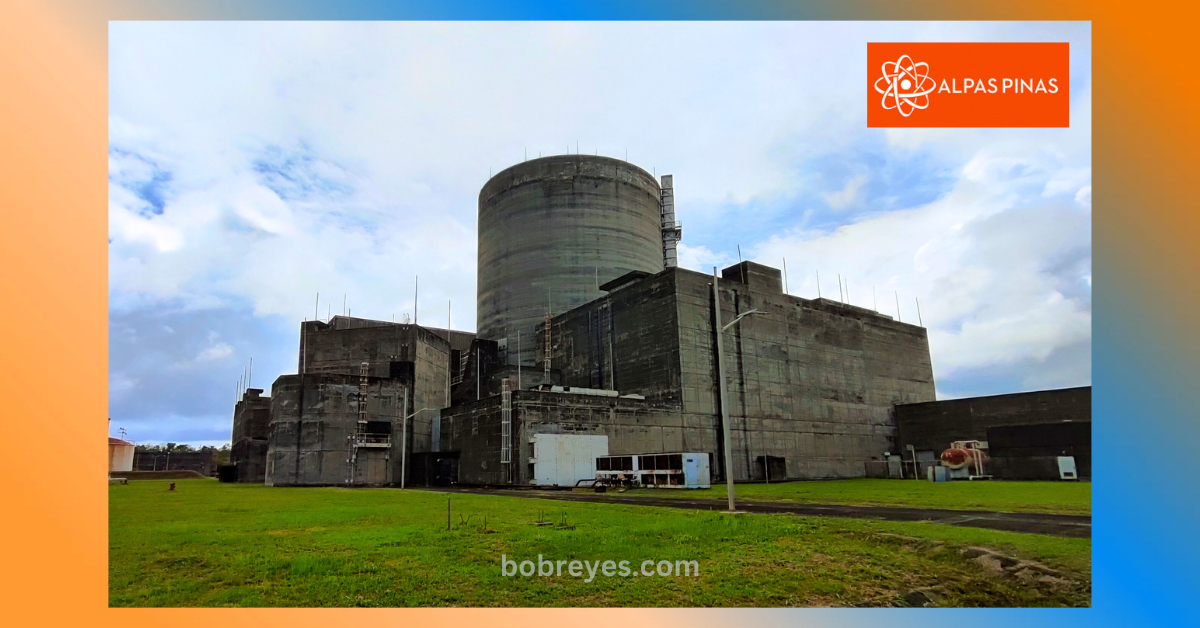According to some, the Philippines is facing an imminent energy crisis, and it’s time to seriously consider the revival of the Bataan Nuclear Power Plant (BNPP) as a solution. Alpas Pinas, a non-profit organization advocating for the use of nuclear energy as a clean and reliable source, believes that exploring nuclear power is essential in addressing the country’s energy woes, including rising costs, increasing population, and the urgent need to combat climate change.
The government has already warned of potential power supply challenges as the depletion of the Malampaya gas fields, which currently provide 30% of Luzon’s energy needs, is expected by 2024. In addition, the country’s growing population and high electricity costs, among the highest in Southeast Asia, further exacerbate the energy situation. To tackle these challenges, the government’s Power Development Plan (PDP) envisions achieving energy self-sufficiency through the utilization of fossil fuels and renewable energy sources.
However, Alpas Pinas argues that nuclear energy can offer a viable alternative to fossil fuels, not only in terms of environmental impact but also in economic feasibility. Currently, the Philippines heavily relies on coal (47%), natural gas (22%), oil (6.2%), geothermal, wind, and solar (24%) to meet its energy demands. These sources had a combined capacity of 22,317 MW in 2019. By 2040, the country will require an additional 44,903 MW of capacity to meet increasing energy demands.
“We believe that adding nuclear energy into our country’s energy mix has the potential to help address our power challenges. Nuclear is the cleanest, cheapest, and most efficient means of producing electricity. It can provide a long-term solution to increasing electricity rates, allowing Filipino families to save more. It will also help ensure more energy abundant, environmentally protected, and a bright future for every Filipino,” according to Gayle Certeza, Convenor of Alpas Pinas.
The BNPP, constructed in response to the 1973 oil crisis, remains an untapped resource that could have provided over 10% of Luzon’s energy requirements with its capacity of 623 MW. Despite its potential, the plant was never commissioned due to various factors, including technical, economic, environmental, and social concerns.
In recent years, experts have recognized the feasibility of refurbishing the BNPP. An International Atomic Energy Agency (IAEA) report commissioned by the government in 2008 affirmed the plant’s viability, stating that it could be economically operated for another 30 years. Congressman Mark O. Cojuangco, a prominent advocate for nuclear energy in the country and representative of the 2nd District of Pangasinan, also believes in the plant’s feasibility due to its high-quality structure.
Cojuangco, who has been at the forefront of nuclear energy advocacy, filed a bill in the 19th Congress pushing for the utilization of this power source. The bill, known as the Philippine National Nuclear Energy Safety Act, aims to establish the Philippine Atomic Energy Regulatory Authority (PhilATOM) and provide a legal framework for the safe utilization of nuclear power. Cojuangco’s unwavering efforts have gained international recognition, as he is set to receive the Distinguished Public Service Award from the American Nuclear Society in the United States.
“Despite being built in the ‘70s, the facility is comparable, if not better than, the power plant buildings utilized in other countries. When revived, we believe it can outlast decades of operation while helping Filipinos enjoy cheaper, cleaner, and more reliable energy source,” Cong. Cojuangco said during a recent media tour of the BNPP.
While the revival of the BNPP is under consideration, the Department of Energy (DOE) has also expressed interest in exploring the construction of a new nuclear plant using small modular reactor (SMR) technology. These developments indicate a growing recognition of nuclear energy as a viable and sustainable solution to the country’s energy crisis.
Reviving the BNPP and embracing nuclear power would diversify the Philippines’ energy sources, providing clean and reliable energy while reducing dependence on fossil fuels. Moreover, it would contribute to the country’s energy security, drive economic growth, and align with global efforts to mitigate climate change.
As the Philippines grapples with an imminent energy crisis, it is imperative for policymakers to seriously consider the revival of the BNPP and explore nuclear energy as a crucial component of the country’s energy future. The time for action is now, and seizing this opportunity will pave the way for a more sustainable and prosperous Philippines.
Members of the media were given an exclusive tour of the Bataan Nuclear Power Plant (BNPP) last Saturday, 03 June 2023. Here are some photos I took during the trip:























